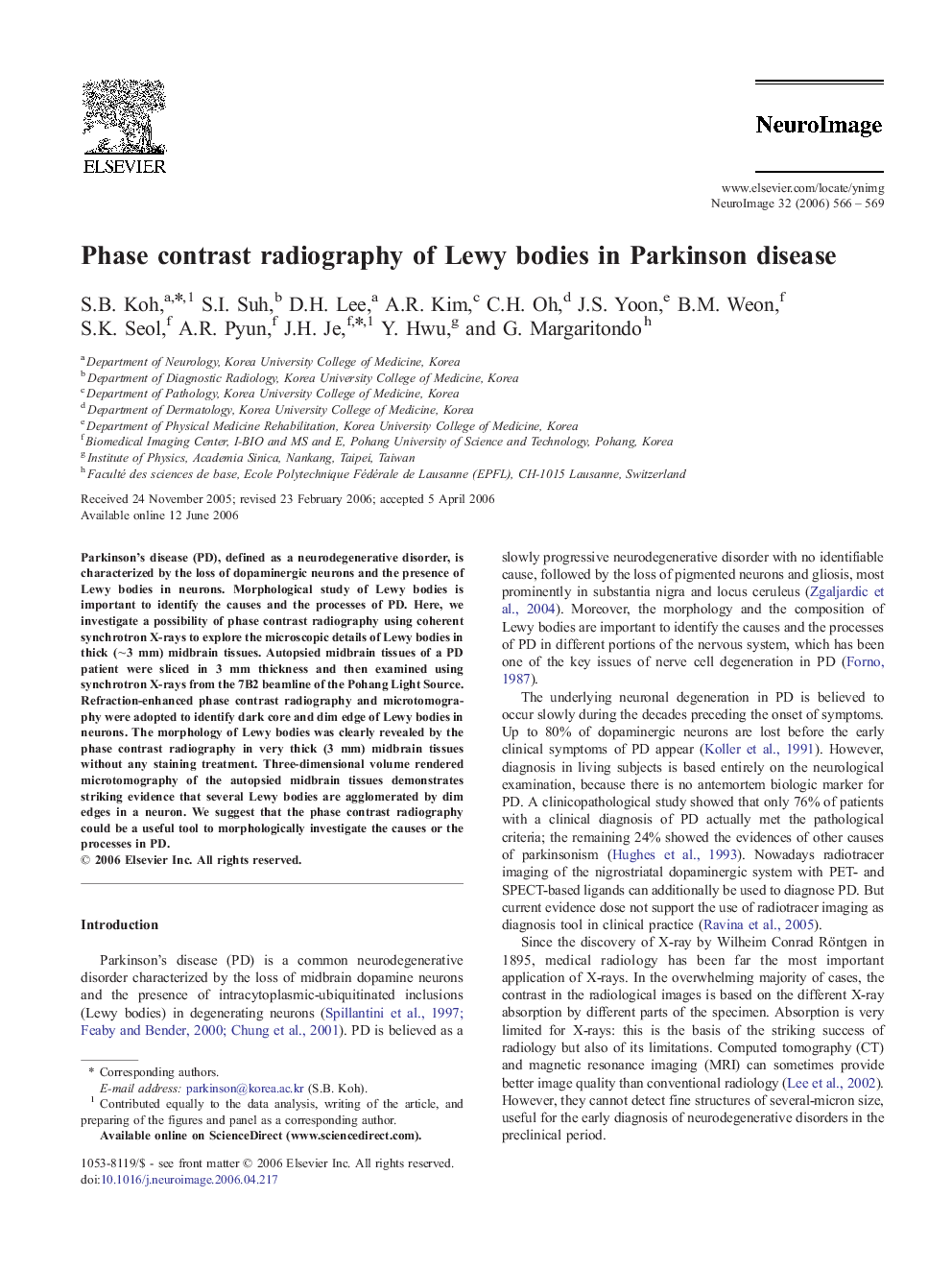| Article ID | Journal | Published Year | Pages | File Type |
|---|---|---|---|---|
| 3074251 | NeuroImage | 2006 | 4 Pages |
Parkinson's disease (PD), defined as a neurodegenerative disorder, is characterized by the loss of dopaminergic neurons and the presence of Lewy bodies in neurons. Morphological study of Lewy bodies is important to identify the causes and the processes of PD. Here, we investigate a possibility of phase contrast radiography using coherent synchrotron X-rays to explore the microscopic details of Lewy bodies in thick (∼3 mm) midbrain tissues. Autopsied midbrain tissues of a PD patient were sliced in 3 mm thickness and then examined using synchrotron X-rays from the 7B2 beamline of the Pohang Light Source. Refraction-enhanced phase contrast radiography and microtomography were adopted to identify dark core and dim edge of Lewy bodies in neurons. The morphology of Lewy bodies was clearly revealed by the phase contrast radiography in very thick (3 mm) midbrain tissues without any staining treatment. Three-dimensional volume rendered microtomography of the autopsied midbrain tissues demonstrates striking evidence that several Lewy bodies are agglomerated by dim edges in a neuron. We suggest that the phase contrast radiography could be a useful tool to morphologically investigate the causes or the processes in PD.
